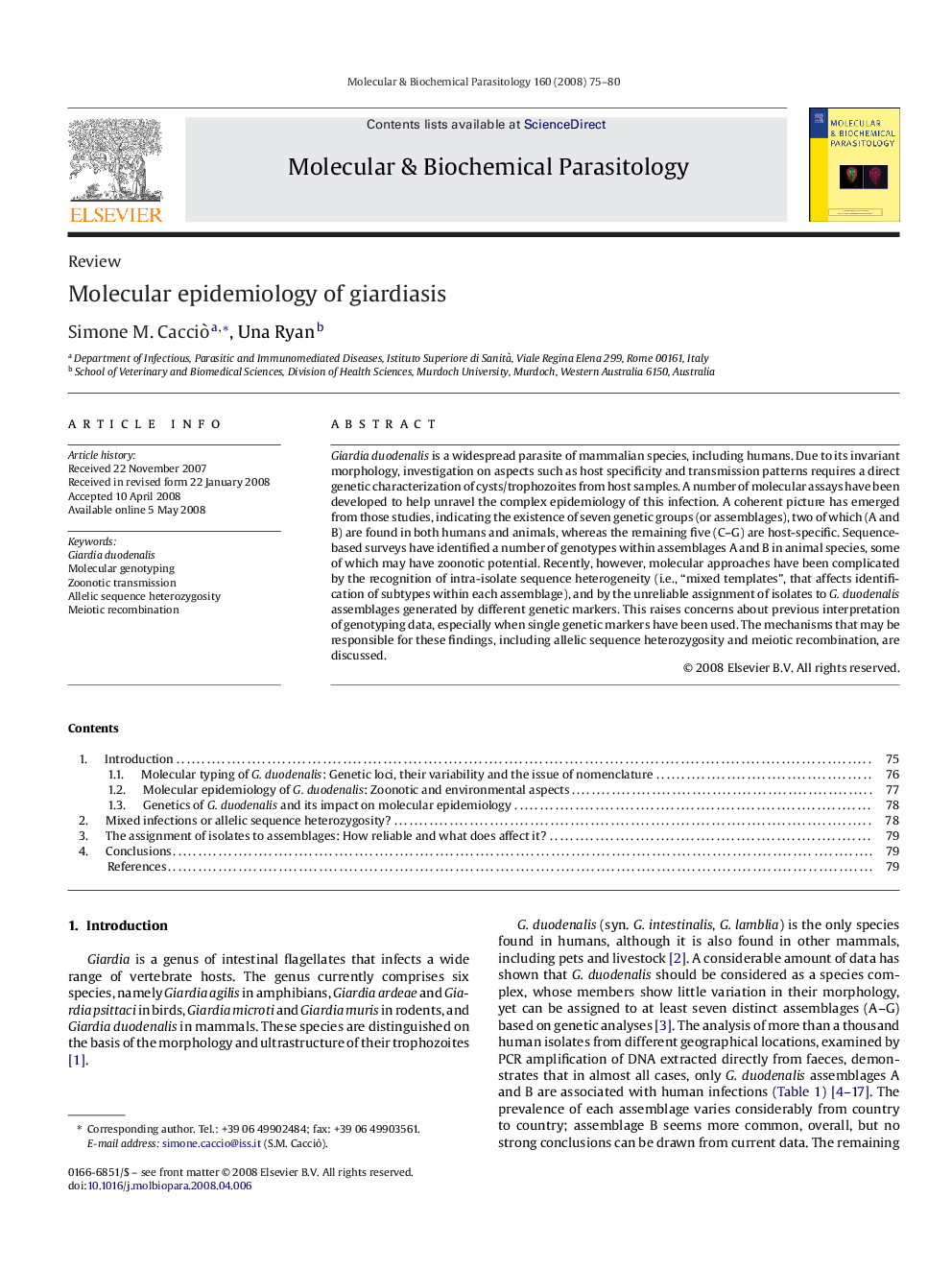| Article ID | Journal | Published Year | Pages | File Type |
|---|---|---|---|---|
| 5915995 | Molecular and Biochemical Parasitology | 2008 | 6 Pages |
Abstract
Giardia duodenalis is a widespread parasite of mammalian species, including humans. Due to its invariant morphology, investigation on aspects such as host specificity and transmission patterns requires a direct genetic characterization of cysts/trophozoites from host samples. A number of molecular assays have been developed to help unravel the complex epidemiology of this infection. A coherent picture has emerged from those studies, indicating the existence of seven genetic groups (or assemblages), two of which (A and B) are found in both humans and animals, whereas the remaining five (C-G) are host-specific. Sequence-based surveys have identified a number of genotypes within assemblages A and B in animal species, some of which may have zoonotic potential. Recently, however, molecular approaches have been complicated by the recognition of intra-isolate sequence heterogeneity (i.e., “mixed templates”, that affects identification of subtypes within each assemblage), and by the unreliable assignment of isolates to G. duodenalis assemblages generated by different genetic markers. This raises concerns about previous interpretation of genotyping data, especially when single genetic markers have been used. The mechanisms that may be responsible for these findings, including allelic sequence heterozygosity and meiotic recombination, are discussed.
Related Topics
Life Sciences
Biochemistry, Genetics and Molecular Biology
Molecular Biology
Authors
Simone M. Cacciò, Una Ryan,
